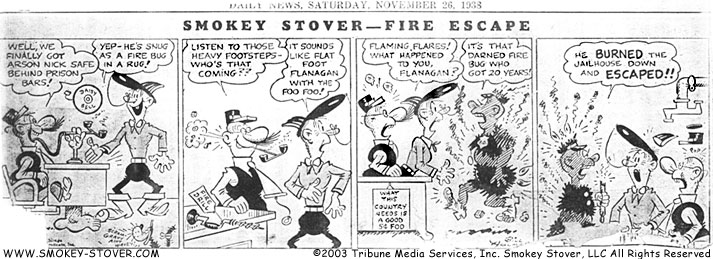
Ancient cultures have had a massive influence over the modern world, often in ways that art totally unexpected until you trace them back to their source. Today, we're going to start from a bit of Chinese mythology/art and work our way forward.
To the right you see one of what are called Chinese Guardian Lions (瑞獅 or Rui Shi, which translates as "auspicious lions"), and traditionally they always come in pairs. This particular one stands outside of the Royal Ontario Museum and it's damned impressive. But that's beside the point. The point is, they were, in the distant past, always large, elaborate, and very difficult to make. Usually carved out of marble or granite, or cast in bronze or iron, they belonged pretty much exclusively to the rich and elite. They were used both as decoration and as protectors over important places like palaces, royal tombs, temples and governmental offices.
Like all things involving the rich and elite, it was only a matter of time before the lower classes started to copy them. They were still pretty difficult to make, so it's not like they ever became incredibly common, but people started putting them in front of their businesses and such, and soon they became symbols not only of protection, but also of wealth and prosperity. Having a pair of Rui Shi was thought to bring prosperity to the business they were guarding, and to this day you can find them in a lot of Chinese food restaurants. Here in the West, they're often called Fu Dogs (Fu translates to "prosperity" or "happiness", and is often spelled Foo in the West), although I'm not entirely sure why they're referred to as dogs. Some speculate it's because the cultures that copied it from China had no contact with lions (the Chinese encountered them in India and Tibet), and that the Chinese-bred dogs the Chow-Chow and the traditional Shar-Pei are bred to look vaguely lion-like. Still, it is from Fu Dogs that we take the next step.
A cartoonist in the early part of the 20th century by the name of Bill Holman owned a Chinese figuring that had written "Foo" written on the bottom. Whether this was a small Fu Dog or not isn't clear this far removed, but it seems possible. Even if it wasn't, it makes for a good story. He thought Foo was quite a funny little word, and being in the business of making comics for the funny pages, he started throwing it into his comic Smokey Stover, which is where the word first makes its appearance in the English-speaking world. Usually thrown in on small signs in the comic, or as some sort of foo pun or alliteration. Below is one of the Smokey Stover comics where it shows up as both an alliteration and in a sign. One of the catchphrases of the comic was "Where there's foo there's fire" which might be a play on the French word feu, which means "fire". This comic, while virtually unknown today, was incredibly popular in the late 1930s, to the point that there were actually Foo Clubs. Over 500 of them. The word also made it into popular songs of the day, and even into movies. And then the comic's popularity waned and use of the word went with it.

(click to embiggen)
Everywhere but in the military. In the United States military the word foo was still being used as a nonsense phrase, and it remained in use as such well into World War II. It was during the latter part of World War II that Allied forces started encountering unidentified objects in the form of balls of light or fire, and for a lack of a better term, they started calling these mysterious objects foo fighters. The story goes that radar operator Donald J. Meiers of the 415th Night Fighter Squadron had a copy of Smokey Stover in his pocket during a debriefing for a mission where the balls of light were spotted chasing a pilot. Meiers, in an agitated state, slammed the comic down in front of his commanding officer and said, "...it was another one of those fucking foo fighters!" The name stuck, including the 'fucking' part, which only disappeared when the New York Times ran an article on the phenomenon in 1945.
Flash forward a few decades, and after Kurt Cobain's suicide and some time drummer for other people, Nirvana's drummer David Grohl made an album for himself. He only made a few copies and gave them mostly to friends. In an attempt to keep it anonymous, he called the band (which at that point was only him, he did all the instrumentation, barring the guitars on one track) Foo Fighters, after the unidentified flying objects of WWII. UFO name for an album he hoped would go unidentified. Despite his initial plan though, the album ended up making the rounds of the record companies, and because of the amount of interest in it, Dave ended up having to form a band to play his music.
So there you go, from ancient China, to early 20th century American funny pages, to WWII UFOs to mainstream late 20th century rock music. Audacious lions to prosperity dogs to happiness statues to alliterative humour to wartime slang to a band name. Rui Shi to Fu to foo to foofighter to Foo Fighters.
Sources
Stone Lion image from Peter Kwok.
Wikipedia article on Chinese Guardian Lions
ROM Public Images - Click on Image Categories -> World Cultures -> Three-Dimensional Artwork -> China -> Figure of female guardian lion
FAQs.org article on the etymology of Foo
Smokey Stover comic taken from Smokey-Stover.com
Wikipedia article on Foo Fighter
New York Times, Jan 2 1945: Balls of Fire Stalk U.S. Fighters In Night Assaults Over Germany - must pay to access
A Historical and Physiological Perspective of the Foo Fighters of World War Two
Wikipedia article on Foo Fighters
Dummerworld article on Dave Grohl